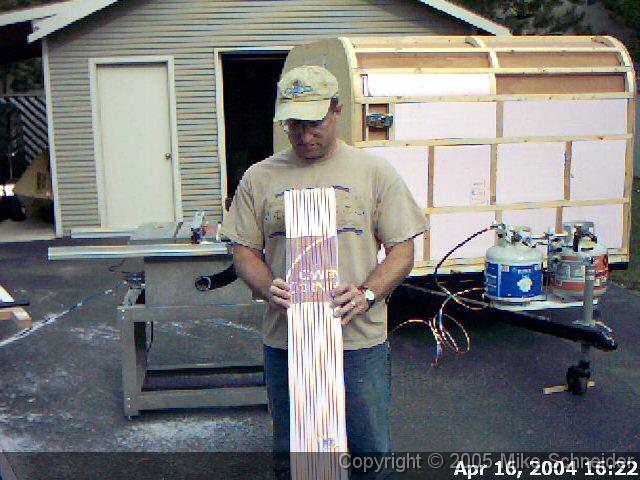Hey GPW, Eagle, Mike and All,
Thanks for this thread. You have me hooked. I plan to start building some time this week on a foam based trailer pod. I may make it removable as has been discussed here. I will start a build thread in that section when I have something to post.
Anyone on here know how tight a radius you can bend the 2 inch foam? I can figure it out but if you have already done the test, it will save me the time.
BTW I have a few pictures of my just recently completed trailer in my album. It has not even been out on a maiden voyage yet. May take it out this weekend for a trial.
Thanks,
Pat G
Eagle kerfed her 1", if I recall correctly, so I imagine you will have to put a pretty hefty kerf in 2"
-

Cliffmeister2000 - Titanium Donating Member
- Posts: 3622
- Images: 157
- Joined: Thu Jul 26, 2007 10:18 pm
- Location: Phoenix, AZ

 Too Hot too long in one place and you melt the foam
Too Hot too long in one place and you melt the foam  .... I'd thought of boiling water , much as some bend plywood ... That's tricky too , but won't melt the foam ... The kerfing seems to be the easiest way , if not the most labor intensive ... cutting the kerfs... I thought of burning the kerf slots with a solder gun ...Quick but stinky , fumes , so that Must be done outside ... a board for a guide would make it fairly easy to get nice straight slots ... careful you leave at least 1/2" of solid foam... Or one of those little zip routers would quickly hog out the kerf slots and you could set the depth fairly accurately ... Again , some type of sliding fence/guide would be necessary ...
.... I'd thought of boiling water , much as some bend plywood ... That's tricky too , but won't melt the foam ... The kerfing seems to be the easiest way , if not the most labor intensive ... cutting the kerfs... I thought of burning the kerf slots with a solder gun ...Quick but stinky , fumes , so that Must be done outside ... a board for a guide would make it fairly easy to get nice straight slots ... careful you leave at least 1/2" of solid foam... Or one of those little zip routers would quickly hog out the kerf slots and you could set the depth fairly accurately ... Again , some type of sliding fence/guide would be necessary ...


 The smooth foam skin offers little tooth to adhere the T2 to , so we've taken to sanding/scuffing up the foam surface to provide better adhesion ... Just a light pass with some 80 grit on a block to break the gloss .... then vacuumed ...
The smooth foam skin offers little tooth to adhere the T2 to , so we've taken to sanding/scuffing up the foam surface to provide better adhesion ... Just a light pass with some 80 grit on a block to break the gloss .... then vacuumed ...

